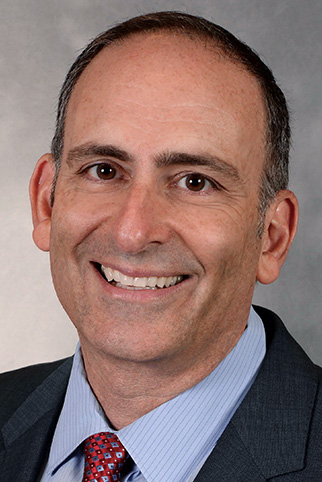/ Featured Blogs
Competing Against Big Cable Companies
 I'm asked at least twenty times a year how a small ISP can compete against the big cable companies. The question comes from several sources - a newly-formed ISP that is nervous about competing against a giant company, a rural ISP that is entering a larger market to compete, or investors thinking of funding a new ISP. These folks are rightfully nervous about competing against the big cable companies.
I'm asked at least twenty times a year how a small ISP can compete against the big cable companies. The question comes from several sources - a newly-formed ISP that is nervous about competing against a giant company, a rural ISP that is entering a larger market to compete, or investors thinking of funding a new ISP. These folks are rightfully nervous about competing against the big cable companies.
- By Doug Dawson
- Comments: 0
- Views: 6,811
Blockchain Domains and What They Could Mean for Online Scams and Brand Protection
 Blockchain domain names, domains that are stored on blockchain or cryptocurrency exchanges, are part of a growing, unregulated, and decentralized internet. Right now, blockchain domains are used mostly by cryptocurrency users, but they are growing in popularity - the Ethereum name service reported over 2.2 million .eth domain name registrations in 2022. At the same time, crypto scams are also exploding, reaching a total of $3.5 billion in losses in 2022.
Blockchain domain names, domains that are stored on blockchain or cryptocurrency exchanges, are part of a growing, unregulated, and decentralized internet. Right now, blockchain domains are used mostly by cryptocurrency users, but they are growing in popularity - the Ethereum name service reported over 2.2 million .eth domain name registrations in 2022. At the same time, crypto scams are also exploding, reaching a total of $3.5 billion in losses in 2022.
- By David Mitnick
- Comments: 0
- Views: 14,703
Hole in Space - the Mother of All Video Chats
 New technology enables new art forms and artists Kit Galloway and Sherrie Rabinowitz (K&S) began working with geostationary satellite links in 1977. Their first work was an experiment in remote dance and music. Video of dancers at The Goddard Space Flight Center in Maryland and an educational television center in California was transmitted to a central control studio where a composite was formed and sent back to monitors the dancers could see.
New technology enables new art forms and artists Kit Galloway and Sherrie Rabinowitz (K&S) began working with geostationary satellite links in 1977. Their first work was an experiment in remote dance and music. Video of dancers at The Goddard Space Flight Center in Maryland and an educational television center in California was transmitted to a central control studio where a composite was formed and sent back to monitors the dancers could see.
- By Larry Press
- Comments: 0
- Views: 6,629
Kleinwaechters Treasure Map
 Wolfgang Kleinwaechters Internet Governance Outlook on CircleID each year sums up the drama of internet governance as it is played out on the global stage. We assume that all players on the internet governance stage work under the premise that despite all our differences, ultimately, we are united in our quest for "freedom from fear and want" based on the quality and dignity of all human beings, as expressed in the Universal Declaration of Human Rights (UDHR).
Wolfgang Kleinwaechters Internet Governance Outlook on CircleID each year sums up the drama of internet governance as it is played out on the global stage. We assume that all players on the internet governance stage work under the premise that despite all our differences, ultimately, we are united in our quest for "freedom from fear and want" based on the quality and dignity of all human beings, as expressed in the Universal Declaration of Human Rights (UDHR).
- By Klaus Stoll
- Comments: 2
- Views: 7,054
Independent Study Shows Very Low Number of Geographical Indications Disputes Within European Domain Names
 The EU is reforming its legal framework concerning geographical indications (GI) protection and has put forward provisions expanding GI protection to domain names in two recent legislative proposals concerning agricultural products and craft/industrial products. In order to support greater GI protection on the internet, both proposals mandate the European Union Intellectual Property Office (EUIPO) to establish a "domain name information and alert system."
The EU is reforming its legal framework concerning geographical indications (GI) protection and has put forward provisions expanding GI protection to domain names in two recent legislative proposals concerning agricultural products and craft/industrial products. In order to support greater GI protection on the internet, both proposals mandate the European Union Intellectual Property Office (EUIPO) to establish a "domain name information and alert system."
- By Polina Malaja
- Comments: 0
- Views: 8,162
The Highest Threat TLDs - Part 2
 In the first article of this two-part blog series, we looked at how frequently domains were used by bad actors for phishing activity across individual top-level domains (TLDs) or domain extensions, using data from CSC's Fraud Protection services, powered by our DomainSecSM platform. In this second article, we analyze multiple datasets to determine the highest-threat TLDs, based on the frequency with which the domains are used egregiously for a range of cybercrimes.
In the first article of this two-part blog series, we looked at how frequently domains were used by bad actors for phishing activity across individual top-level domains (TLDs) or domain extensions, using data from CSC's Fraud Protection services, powered by our DomainSecSM platform. In this second article, we analyze multiple datasets to determine the highest-threat TLDs, based on the frequency with which the domains are used egregiously for a range of cybercrimes.
- By David Barnett
- Comments: 0
- Views: 19,373
Are We Facing the Splinternet?
 One of the consequences of the war between Russia and Ukraine is that Russia has largely stopped participating in many large worldwide web applications. Russia has blocked Facebook and Twitter. Other applications like Apple, Microsoft, TikTok, Netflix, and others have withdrawn from Russia. The European Union is in the process of trying to block Russian-generated content, such as the state-owned news outlets of RT (formerly Russia Today) and Sputnik.
One of the consequences of the war between Russia and Ukraine is that Russia has largely stopped participating in many large worldwide web applications. Russia has blocked Facebook and Twitter. Other applications like Apple, Microsoft, TikTok, Netflix, and others have withdrawn from Russia. The European Union is in the process of trying to block Russian-generated content, such as the state-owned news outlets of RT (formerly Russia Today) and Sputnik.
- By Doug Dawson
- Comments: 0
- Views: 7,060
The Highest Threat TLDs - Part 1
 A domain name consists of two main elements: the second-level domain name to the left of the dot - often consisting of a brand name or relevant keywords - and the domain extension or top-level domain (TLD) to the right of the dot. Domain names form the key elements of the readable web addresses allowing users to access pages on the internet and also allowing the construction of email addresses.
A domain name consists of two main elements: the second-level domain name to the left of the dot - often consisting of a brand name or relevant keywords - and the domain extension or top-level domain (TLD) to the right of the dot. Domain names form the key elements of the readable web addresses allowing users to access pages on the internet and also allowing the construction of email addresses.
- By David Barnett
- Comments: 9
- Views: 16,166
Internet Governance Outlook 2023: Will “Digital Coop-Frontation” Become the “New Normal”?
 In 2022, the Internet world was shaken by big contradictions. On the one hand, efforts to constitute a stable and secure framework for a safe cyberspace made substantial progress. The UN got a new Tech Envoy. The UN-based Internet Governance Forum (IGF) got a "Leadership Panel." The UN negotiations on cybersecurity and cybercrime produced constructive interim results.
In 2022, the Internet world was shaken by big contradictions. On the one hand, efforts to constitute a stable and secure framework for a safe cyberspace made substantial progress. The UN got a new Tech Envoy. The UN-based Internet Governance Forum (IGF) got a "Leadership Panel." The UN negotiations on cybersecurity and cybercrime produced constructive interim results.
- By Wolfgang Kleinwächter
- Comments: 2
- Views: 20,717
NIS2, ICANN and “Thick” WHOIS: A Mandate to Move Forward
 The recent adoption at the end of December of the new EU Directive for a high level of cybersecurity across the Union -- commonly referred to as "NIS2" - paved the way for important updates to the domain name system (DNS). Most significantly, Article 28 of NIS2 and its related recitals resolved any ambiguities about the public interest served by a robust and objectively accurate WHOIS system that permits legitimate access by third parties to data...
The recent adoption at the end of December of the new EU Directive for a high level of cybersecurity across the Union -- commonly referred to as "NIS2" - paved the way for important updates to the domain name system (DNS). Most significantly, Article 28 of NIS2 and its related recitals resolved any ambiguities about the public interest served by a robust and objectively accurate WHOIS system that permits legitimate access by third parties to data...
- By Dean Marks
- Comments: 1
- Views: 9,651